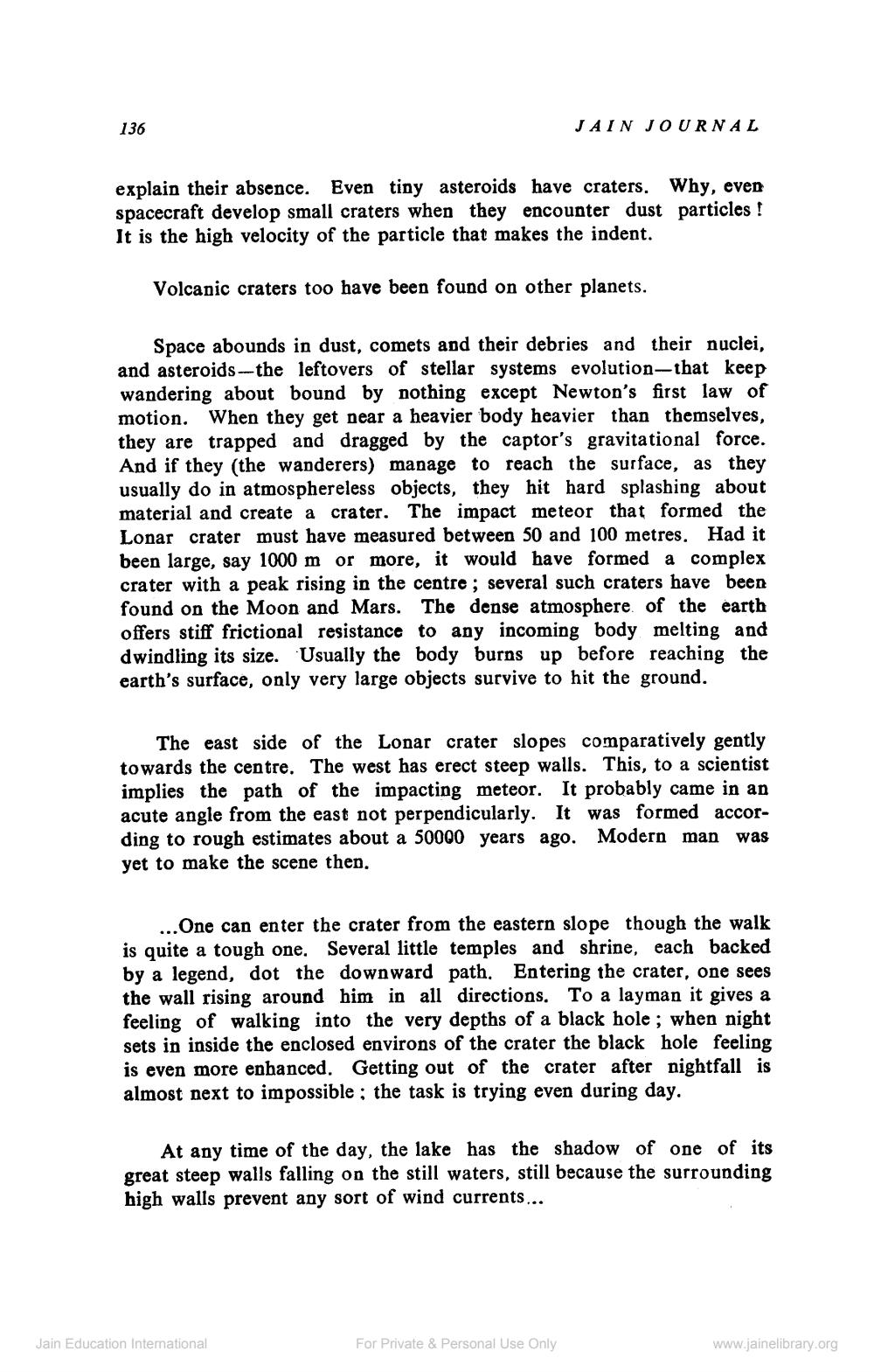________________
136
JAIN JOURNAL
explain their absence. Even tiny asteroids have craters. Why, even spacecraft develop small craters when they encounter dust particles ! It is the high velocity of the particle that makes the indent.
Volcanic craters too have been found on other planets.
Space abounds in dust, comets and their debries and their nuclei, and asteroids--the leftovers of stellar systems evolution--that keep wandering about bound by nothing except Newton's first law of motion. When they get near a heavier body heavier than themselves, they are trapped and dragged by the captor's gravitational force. And if they (the wanderers) manage to reach the surface, as they usually do in atmosphereless objects, they hit hard splashing about material and create a crater. The impact meteor that formed the Lonar crater must have measured between 50 and 100 metres. Had it been large, say 1000 m or more, it would have formed a complex crater with a peak rising in the centre; several such craters have been found on the Moon and Mars. The dense atmosphere of the earth offers stiff frictional resistance to any incoming body melting and dwindling its size. Usually the body burns up before reaching the earth's surface, only very large objects survive to hit the ground.
The east side of the Lonar crater slopes comparatively gently towards the centre. The west has erect steep walls. This, to a scientist implies the path of the impacting meteor. It probably came in an acute angle from the east not perpendicularly. It was formed according to rough estimates about a 50000 years ago. Modern man was yet to make the scene then.
... One can enter the crater from the eastern slope though the walk is quite a tough one. Several little temples and shrine, each backed by a legend, dot the downward path. Entering the crater, one sees the wall rising around him in all directions. To a layman it gives a feeling of walking into the very depths of a black hole; when night sets in inside the enclosed environs of the crater the black hole feeling is even more enhanced. Getting out of the crater after nightfall is almost next to impossible ; the task is trying even during day.
At any time of the day, the lake has the shadow of one of its great steep walls falling on the still waters, still because the surrounding high walls prevent any sort of wind currents...
Jain Education Interational
For Private & Personal Use Only
www.jainelibrary.org




